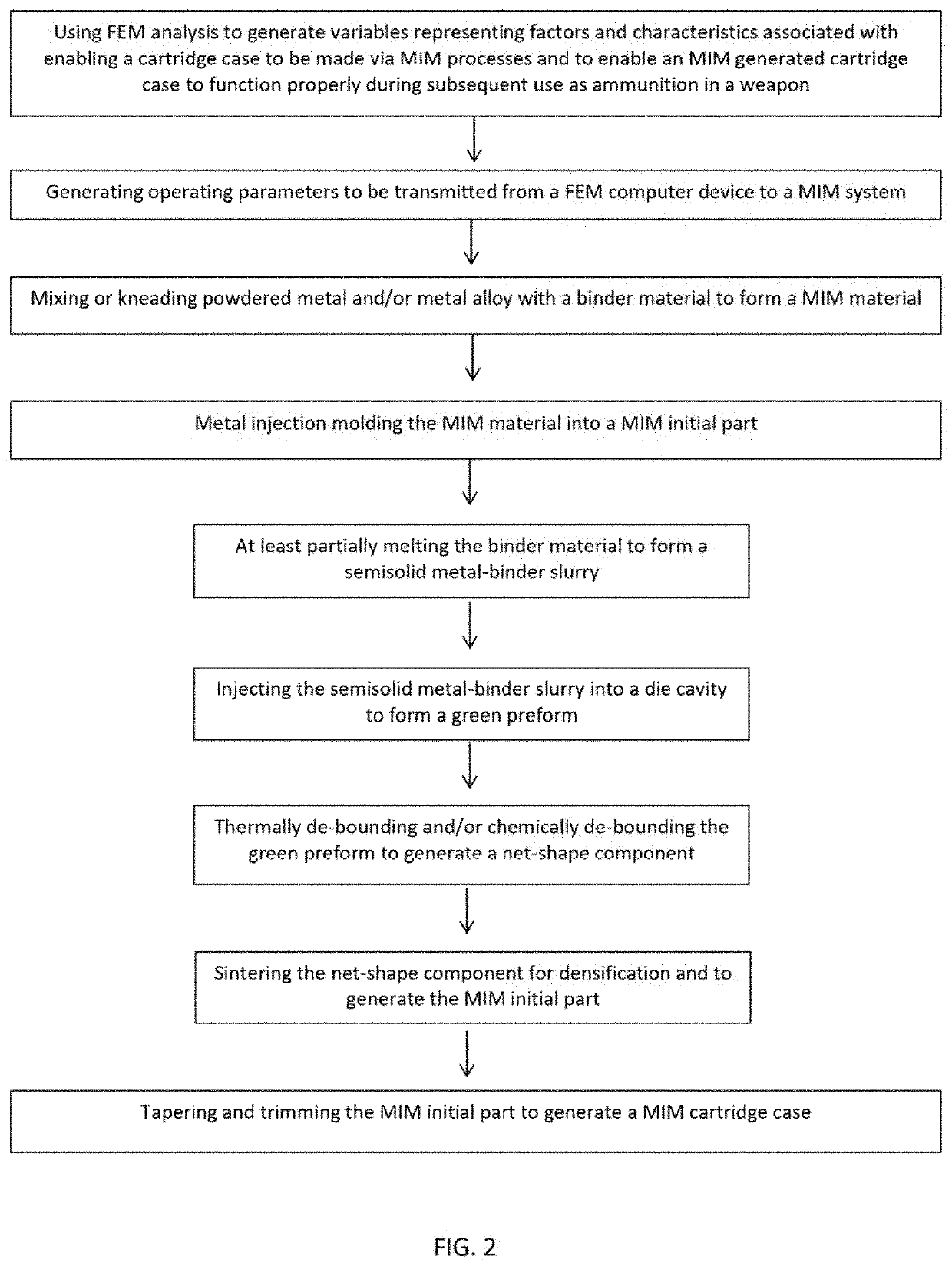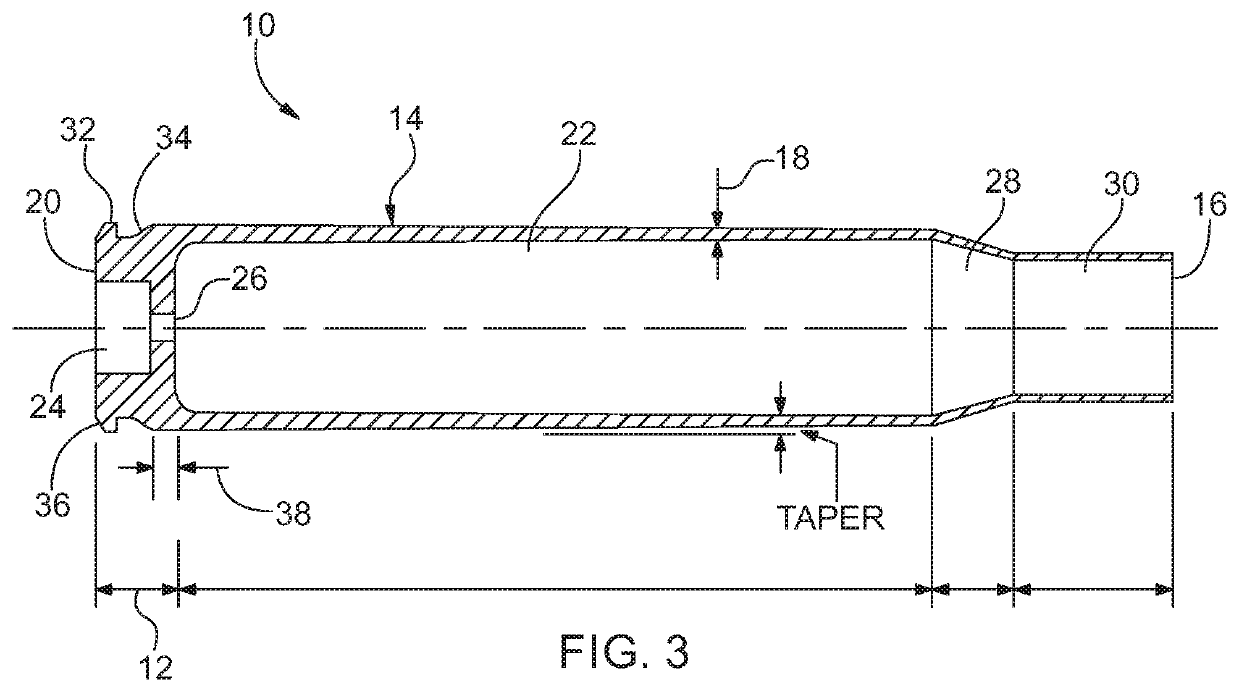Metal Injection Molded Cased Telescoped Ammunition
a technology of metal injection molding and telescopes, which is applied in the field of cartridge cases, can solve the problems of high cost and inflexibility in the design and production of cartridge cases, high scrap rate and non-conformity parts, and complex process of small caliber ammunition production, etc., and achieves the effects of facilitating the generation of a holistic approach, reducing scrap rate and/or better performing cartridge cases
- Summary
- Abstract
- Description
- Claims
- Application Information
AI Technical Summary
Benefits of technology
Problems solved by technology
Method used
Image
Examples
case cartridges 10
[0142]Case cartridges 10 with MIM materials 140 having a yield strength to modulus ratio above approximately 4.0 can perform equivalent to or better than a traditional brass cartridge. (See FIGS. 9A-9B). Thus, MIM materials 140 with a yield strength to modulus ratio above 4.0 may be preferred.
[0143]Generating variables for comparing the MIM material 140 to a known material (e.g., brass) to form a baseline can further include creating a baseline dynamic explicit Finite Element Analysis (“FEA”) firing simulation. This may include approximating exact weapon geometry and firing information based on actual data and / or publically available data. This may further include obtaining actual data from a traditional brass cartridge to include as part of the baseline. This may further include evaluations using at least one of maximum material conditions (“MMC”) and least material conditions (“LMC”) to understand the significance of cartridge case 10 tolerances. For example, MMC may lead to a lea...
PUM
| Property | Measurement | Unit |
|---|---|---|
| bolt forces | aaaaa | aaaaa |
| diameter | aaaaa | aaaaa |
| density | aaaaa | aaaaa |
Abstract
Description
Claims
Application Information
 Login to View More
Login to View More - R&D
- Intellectual Property
- Life Sciences
- Materials
- Tech Scout
- Unparalleled Data Quality
- Higher Quality Content
- 60% Fewer Hallucinations
Browse by: Latest US Patents, China's latest patents, Technical Efficacy Thesaurus, Application Domain, Technology Topic, Popular Technical Reports.
© 2025 PatSnap. All rights reserved.Legal|Privacy policy|Modern Slavery Act Transparency Statement|Sitemap|About US| Contact US: help@patsnap.com



